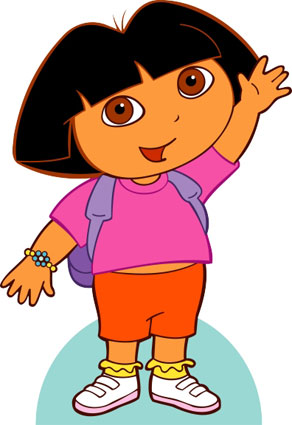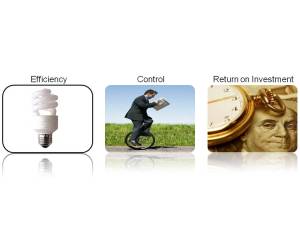It might not seem to make sense at first, but if you think about it, Dora and her friend Boots, Backpack & the Map excel in the art of storytelling - specifically, in highlighting for us why repetition is so important in our presentations.
By way of a quick background, you may have guessed that I've been reading a lot lately on how to give more powerful, compelling presentations through design and storytelling. Through the wizardry of Nancy Duarate of Duarte Design & her book slide:ology, Garr Reynolds' Presentation Zen, and Scott Schwertly of Ethos3, I feel like Luke Skywalker on his path to becoming a Jedi. I started out as a lost soul in the world of boring bullet point presentations and 12-point font, to seeing that there actually is a better way to present that is more in tune with how our brains perceive messages, to now where I can honestly say I haven't bored a soul (as of yet) with my visually compelling and persuasive presentations.
So, back to Dora the Explorer. So, one afternoon around 4:30, I took a break from working in my home office, and went downstairs to sit with my kids as they were watching Dora. For a moment, I dismissed this as just a children's show ... but then, as I sat there trying to figure out with my kids how Dora is going to find the chocolate, bananas & nuts for her mommy's special birthday cake ... it clicked! Dora is a master storyteller who excels at the art of storytelling. I couldn't believe it - the very methods we use to teach our children about remembering ideas & messages is equally applicable to adults in presentations! It was like this epiphany I had sitting there at the couch, and suddenly, I was more excited about Dora than my kids!
Here's how Dora does it - first, she lays out in her introduction what she wants to do: bake her mommy a special chocolate banana nut birthday cake. Then, she lays out the problem. She has no idea how to get the ingredients. So, she asks her friend, the Map, to help her. Map comes out and lays out the Agenda: First, you need to go to chocolate tree; second, you need to go to the bananas, and then you need to get the nuts. Then, Map repeats it: chocolate tree, bananas and nuts. Instantly, my kids and I remember exactly what Dora needs to do -- and just in case we didn't get it the first two times Map said it, Dora repeats it: chocolate tree, bananas, and nuts. I'm guessing by now, you've also remembered exactly what Dora needs to do.
After Dora successfully gets each ingredient, she then repeats where we need to go next - constantly reminding us of our mission, where we were and where we need to go in order to be successful. Finally, after Dora gets all of the ingredients, they celebrate, goes home, adds all of the ingredients, and we see the final product before our eyes where her mommy rejoices in happiness that her daughter made her this lovely cake!
How have I applied Dora's mastery in storytelling in my presentations? Simple: like Garr Reynolds does in his book, I'll focus on 2 or 3 themes. Each theme is 1 or 2 words and is accompanied by an image that specifically relates to the theme. For example, let's say my 3 themes are: 1) efficiency (image: fluorescent light bulb); 2) control (image: business man on a unicycle reading a report); and 3) return on investment (image: a nice shot of a pocket watch & a $100 bill). I'm not the pros listed above, but I thought it was pretty clever.




